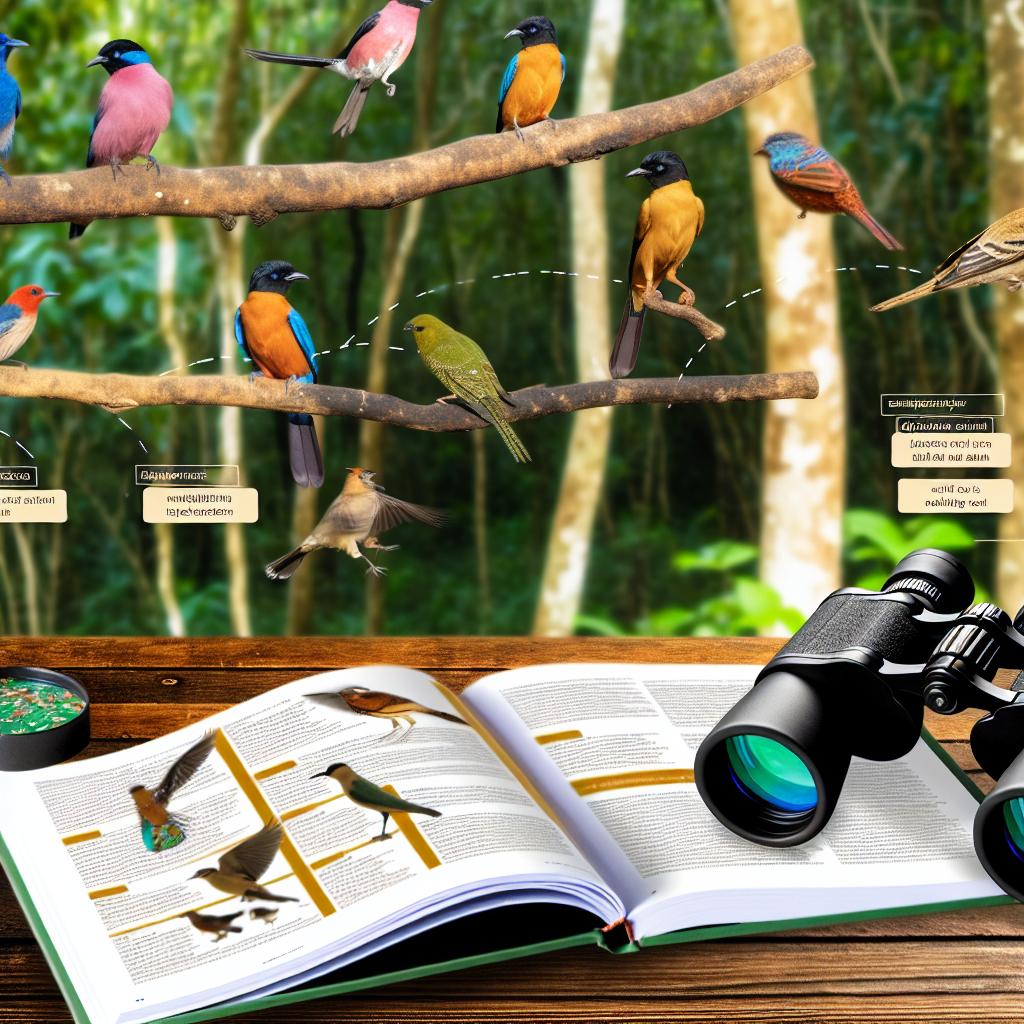Introduction to Choosing Binoculars for Birdwatching
Birdwatching, a beloved pastime for many outdoor enthusiasts, presents a distinctive chance to appreciate avian wildlife in its natural habitat. The choice of binoculars is pivotal for enhancing the quality of this experience. Given the myriad of options available in the market, understanding the key features and considerations will streamline the selection process, leading to a more enjoyable birdwatching journey.
Magnification and Objective Lens Diameter
A fundamental factor in choosing binoculars is understanding the magnification power and the diameter of the objective lens, commonly expressed in figures such as 8×42 or 10×50. The first number specifies the magnification, denoting how many times closer the object being viewed appears. For birdwatching activities, a magnification level between 8x and 10x is typically suggested. This range offers an appropriate balance between sufficient magnification and a manageable field of view, suitable for observing birds at a distance without compromising image stability.
The second number indicates the objective lens diameter in millimeters, a crucial determinant of light-gathering ability and image quality, especially in dim light environments such as dawn or dusk. While a larger objective lens can enhance visibility, it also adds to the binocular’s bulkiness and weight. Thus, a 42mm lens diameter is often deemed the sweet spot for most birdwatching scenarios, providing adequate light intake without overly burdening the user.
Field of View
The field of view of binoculars represents the width of the observable area at a certain distance, typically noted as feet at 1,000 yards or meters at 1,000 meters. A wider field of view is typically more suitable for birdwatching, as it allows individuals to track swiftly moving birds with ease and capture larger expanses of their habitat in a single glance. Usually, binoculars with lesser magnification offer a broader field of view, a trade-off often worth considering for bird enthusiasts aiming to maximize their observational reach.
Weight and Portability
Consideration of the binocular’s weight is essential to prevent fatigue during lengthy birdwatching excursions. While heavier binoculars may pose a challenge in terms of endurance and comfort, lightweight models are much easier to carry and operate, especially over extended periods. It is important to aim for a compromise between portability and the quality of optics. Opting for binoculars that are both lightweight and constructed from durable materials can enhance the overall birdwatching experience.
Optical Quality
High optical quality is a non-negotiable attribute for birdwatchers who seek clarity and precision in their observations. Critical components to look for include multi-coated lenses, which boost brightness and curb glare and reflection. The binoculars should furnish a bright, sharp image with minimal distortion and true-to-life color rendition. These attributes ensure that birdwatchers can enjoy crisp and clear views, capturing the finest details of avian plumage and behavior.
Eye Relief
Eye relief stands as an essential aspect of comfort, particularly for those who wear glasses. It refers to the optimal distance between your eye and the eyepiece that allows you to view the complete field of view. An eye relief of at least 15mm is advisable for glasses wearers, as it permits full visibility without necessitating the removal of glasses, thus ensuring a comfortable and uninterrupted birdwatching experience.
Weather Resistance
Given that birdwatching might entail exposure to diverse weather conditions, selecting binoculars with weather-resistant features is prudent. Opt for models that are both waterproof and fog-proof, generally incorporating a filling of nitrogen or argon gas. This capability ensures the binoculars can endure unexpected showers and high humidity, ultimately contributing to their longevity and reliability in the field.
Budget Considerations
While high-end binoculars deliver superior performance and unparalleled clarity, a range of options exists to accommodate all budgets. Strive to strike a balance between cost and quality, knowing that many affordable models still offer excellent viewing experiences. Review feedback and expert evaluations to pinpoint binoculars that present the greatest value for money, ensuring a prudent investment in birdwatching equipment.
Conclusion
To conclude, the process of selecting binoculars for birdwatching should contemplate several crucial factors such as magnification, lens diameter, field of view, weight, optical quality, eye relief, and weather resistance. Each of these elements serves an important function in enhancing the birdwatching experience. For those seeking more comprehensive guidance on binocular selection or possible purchasing avenues, exploring online guides and reputable birdwatching sources can be immensely helpful. By giving precedence to these factors, birdwatchers can identify the binoculars that best align with their requirements, thereby significantly enriching their enjoyment and satisfaction during birdwatching excursions.
This article was last updated on: May 17, 2025


